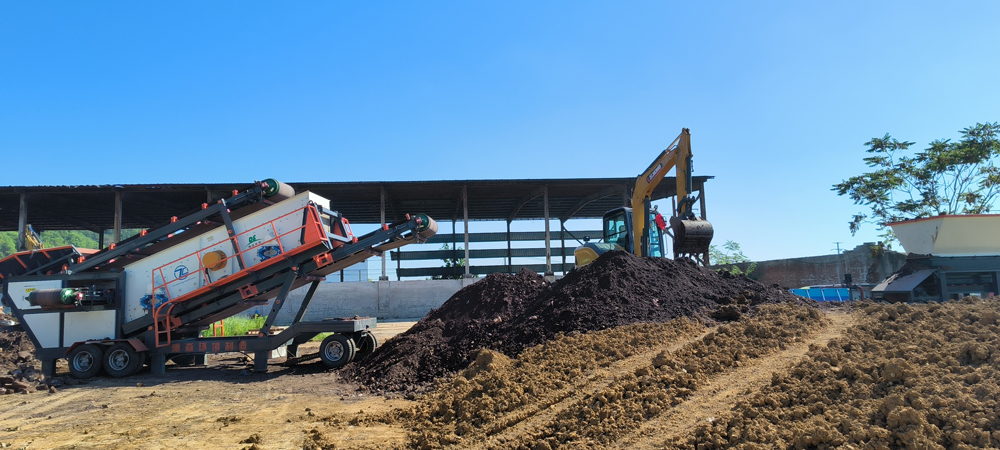DESEN Environmental Mobile Screening plant: The Front-End Engine Driving Waste Reduction and Resource Recovery
In the full chain of solid waste treatment, screening is often seen as a basic step — yet traditional static systems, with their low efficiency and poor adaptability, frequently cause bottlenecks that hinder subsequent remediation and resource utilization.The Mobile Screening plant developed by Zhe
In the full chain of solid waste treatment, screening is often seen as a basic step — yet traditional static systems, with their low efficiency and poor adaptability, frequently cause bottlenecks that hinder subsequent remediation and resource utilization.
The Mobile Screening plant developed by Zhengzhou DESEN Environmental Technology Co., Ltd. redefines this perception. Moving beyond the notion of a “simple screening tool,” it acts as a precision pre-treatment and process-linking engine, powering the transformation of waste management toward reduction, harmless disposal, and resource recovery.

1. Clearing the Path for Efficient Remediation and Recycling
DESEN’s screening plant plays a crucial role in preparing materials for the next stages of treatment.
In contaminated soil processing, it precisely separates stones, plastics, and other debris, preventing these from damaging the core components of washing systems. By ensuring finer soil particles make full contact with washing reagents, heavy metal removal efficiency increases by 15–20%.
In construction waste recycling, it classifies aggregates by particle size, directly producing materials suitable for recycled bricks — eliminating the need for secondary crushing and boosting recycling efficiency by over 30%.
In a mine rehabilitation project, soil pre-treated by DESEN’s screening plant achieved a 25% higher vegetation survival rate compared to untreated soil, proving the strong enabling effect of precise front-end screening.
2. Strengthening Ecological Synergy from the Source
Beyond improving efficiency, the DESEN screening plant enhances ecological protection through on-site operation and pollution prevention.
Traditional fixed screening often requires extensive site construction and long-distance material transport — both of which risk soil structure damage and secondary pollution from spillage. By contrast, DESEN’s mobile, field-deployable design enables on-site screening, avoiding unnecessary transport and minimizing disruption to surrounding ecosystems.
3. Precision Screening That Powers Resource Utilization
DESEN’s precision approach creates a direct link between waste classification and resource recovery:
Fine mine tailings can be reused for vegetation reclamation.
Qualified aggregates from construction waste can re-enter building material production.
Contaminated soil, once purified of impurities, requires less chemical reagent in later treatment stages.
In a mining area restoration project, this approach raised the material reuse rate to over 85%, significantly reducing landfill volume and establishing a true ecological closed loop that integrates screening, recovery, and remediation.
4. Emergency-Ready for Extreme Conditions
The DESEN screening plant also excels in emergency environmental operations:
After flood disasters, it can quickly deploy in muddy river channels to separate branches and waste from sludge, accelerating the start of sludge treatment.
In sudden pollution events, it can immediately begin on-site screening of contaminated soil, classifying materials by contamination level to support targeted remediation strategies.
This rapid-response capability makes it a vital asset in environmental emergency response and disaster recovery.
5. From Single Function to Full-Chain Empowerment
DESEN’s innovation lies in breaking the limits of traditional “screening-only” thinking. The Mobile Screening plant is designed as a core connector between waste collection and downstream treatment, transforming screening into a strategic link that drives the upgrade of the entire solid waste management industry.
By combining mobility, precision, and ecological intelligence, it provides a scalable and field-proven solution for modern waste treatment — one that enables cleaner processes, lower costs, and higher environmental value.





